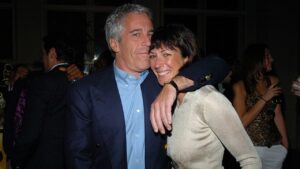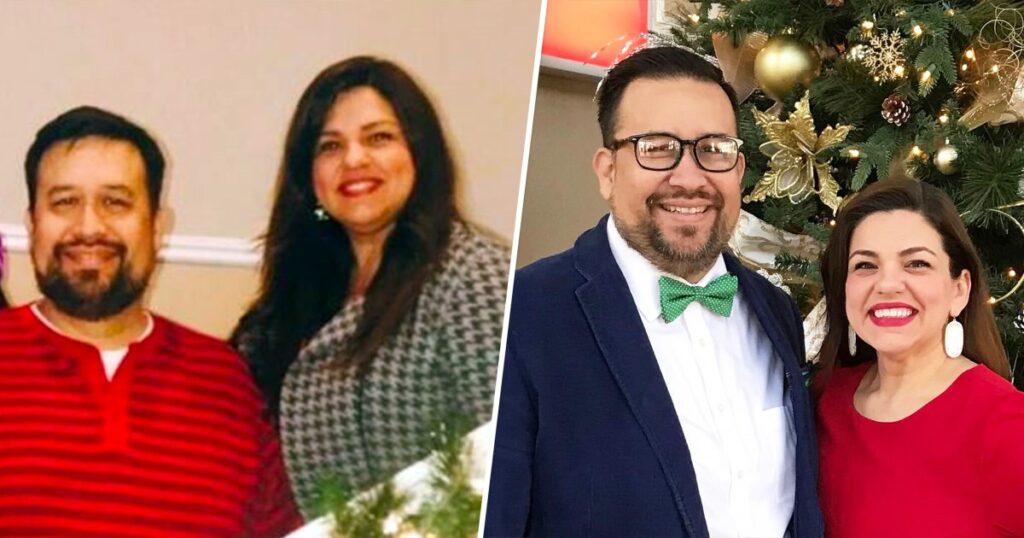Welcome to Start TODAY. Sign up for our Start TODAY newsletter to receive daily inspiration sent to your inbox — and join us on Instagram!
For Elizabeth and TJ Atkinson of Houston, marriage, work and raising children filled their days — and, quickly, their years. “We were busy living our life, and not making our health a priority,” Elizabeth tells TODAY.com.
After more than two decades together, Elizabeth weighed 248 pounds — one sandwich away from 250, she says. TJ weighed 330 and had developed type 2 diabetes. They realized it was time to take care of their health, and in February 2019, they joined WeightWatchers together.
The program worked for them. They learned they could still have the foods they liked, as long as they worked them into the WeightWatchers Points budget. They started eating more vegetables. They also connected with support since they met regularly with other people who were facing the same struggles.
By the end of 2019, Elizabeth’s weight was down to 150 pounds, and by the end of 2020, TJ had dropped to 200 pounds. “I don’t want to say it was easy, but you have the support and the steps laid out in front of you. It was easier than I thought,” she says. In fact, she was so enthusiastic about the program that she started working for WeightWatchers in early 2020.
Losing weight helped them feel strong and healthy. “We were on top of the world. We were at our goal weight, active and feeling so good,” she says.
That was when they got a devastating diagnosis.

TJ found out he needed a kidney transplant
Like many people with diabetes, TJ had problems with blood circulation. “One of the things you have to really look out for is your feet. I had gotten a cut on my foot and it got infected, and I ended up getting sepsis,” he says.
He needed to be hospitalized, and while he was there, a lab test showed that he had stage 4 kidney disease. He started dialysis right away and got on the waiting list for a kidney transplant, which could take up to ten years.
Dialysis was grueling. He needed four-hour-long treatments every other day, and on the rest days, he would sleep for 20 hours. “You’re so tired and drained afterward, and your body is cramping,” he says. A port in his chest couldn’t get wet, which made it challenging to shower, and he couldn’t swim in their pool.
“He lost a year and a half out of our lives. He didn’t get to join us in our celebrations, birthdays or holidays. He was at home sleeping,” Elizabeth says. “He was still alive physically, but he didn’t get to participate in any of our social life, volunteer jobs, work and community service stuff that we love doing.”
Plus, he was at risk of dying from kidney failure. “When he first got this diagnosis, doctors were telling me there was a strong possibility I was going to be a widow at 42 years old. It was very scary,” she says.
Looking for a path to a donor kidney
Right away, Elizabeth researched whether she could give one of her kidneys to TJ. She was thrilled to discover that she had already cleared one major obstacle by losing weight.
“You have to have a body mass index of 24 or less to be eligible to donate. Thankfully, I had lost the weight. When I first started WeightWatchers, my BMI was 42. I would have never been eligible until I got the weight off,” she says.
Still, qualifying to be a donor took 11 months. “I thought it would be so quick, but they want to make sure the recipient gets the best kidney possible,” she says. They check you from head to toe, inside and outside. “You can’t even have a cavity. If you have a cavity, you have to have it filled before you donate,” Elizabeth says.
Elizabeth’s blood type wasn’t a match for TJ, so she connected with a kidney partner swap program. This program allows people to donate kidneys and be paired with another donor. The donors don’t have to be a close relative. They can be anyone willing and qualified to donate.
After three months, the program was able to set up an exchange. Elizabeth’s kidney would go to a 65-year-old woman in Denver, and TJ would receive a kidney from a 20-year-old college student in Pittsburgh.
“I was beyond thrilled. It was like our prayers had been answered, and I get to keep my husband now. It was a big deal. We were childhood sweethearts who planned to grow up and grow old together,” Elizabeth says.
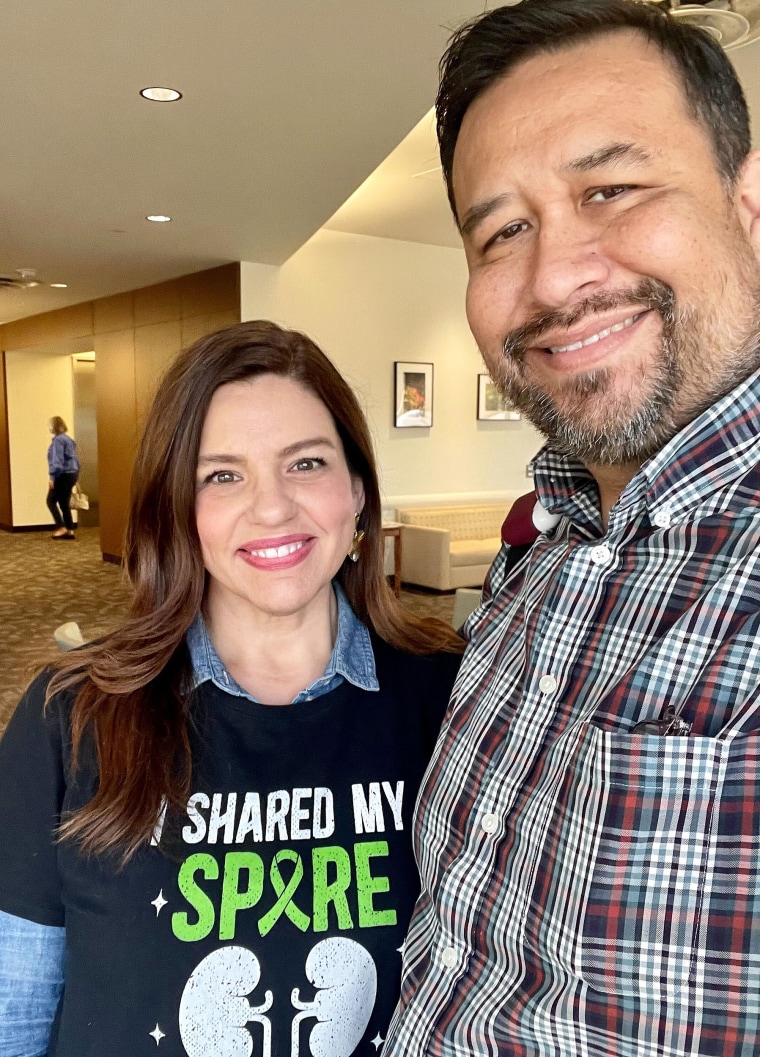
Four surgeries across the US on the same day
October 27, 2022, was surgery day. Elizabeth’s operation was first. Surgeons removed her left kidney and sent it off to Denver. “We were praying for good weather and that everything went well. Because even though I had donated, if the recipient doesn’t get hers in, TJ doesn’t get his,” she says. Luckily, it worked beautifully.
Later that afternoon, TJ’s donor had her surgery in Pittsburgh, and her kidney was flown to Houston. TJ’s surgery took eight hours, and his new kidney was already working before he was stitched up.
“That was the best day of my life,” Elizabeth says. “You think that would be the day you get to marry your love, or the days your children are born. But for me, it was finding out I get to keep my husband.”
The recovery process was quite different for the two of them. TJ says, “I was like a brand-new person. With dialysis, you only have 15% of a functioning kidney. Right after surgery I was at 70% already, and I was feeling so much better. People kept telling me, ‘You got your color back. You got your sense of humor back.’ You don’t realize how much it takes out of you until you’re in recovery.”
Elizabeth’s surgery was much more invasive, and she was in a lot more pain and discomfort. She stayed in bed on her side for a month, only getting up to use the bathroom. “It was the most excruciating pain of my life, but I was the happiest I had ever been, and I knew I was going to heal,” she says.
She kept working, joining Zoom calls from bed with her camera off. After two months, she was feeling a lot better, and after four or five months, she was fully healed and could go back to the gym.
TJ returned to work the following May, after he was through with his recovery and follow-up appointments to check for healing and signs of organ rejection.
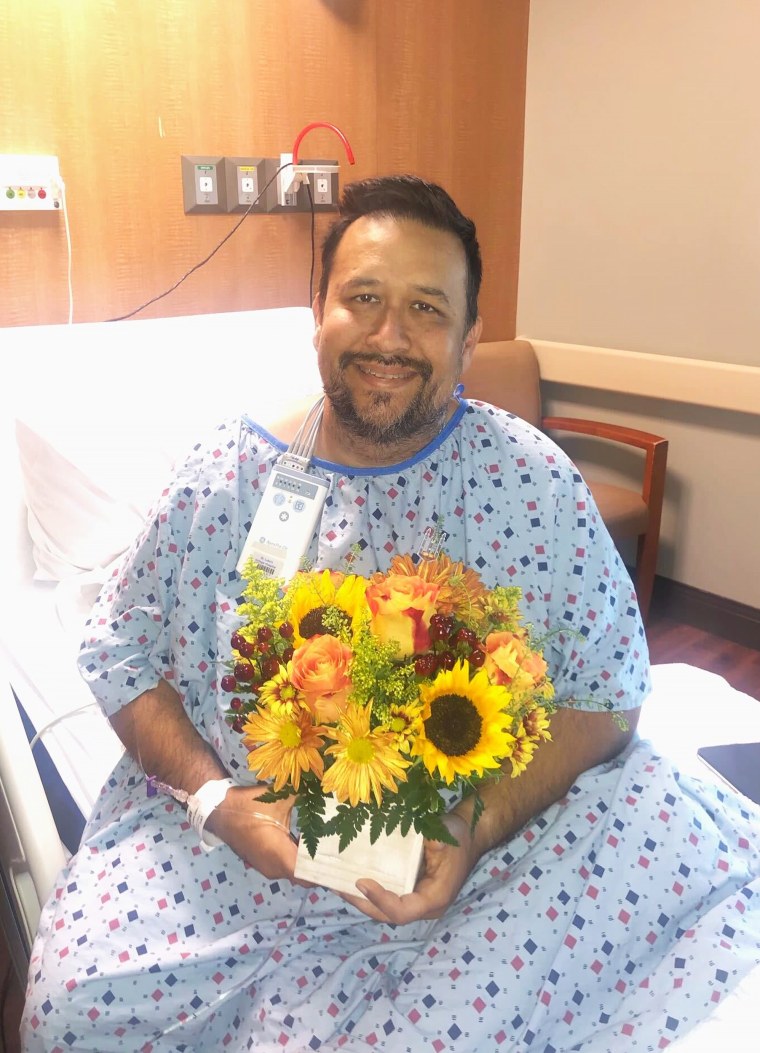
They’re focusing on building strength and making time to travel
TJ’s new kidney is working well, and his health is getting better. The transplant process led to weight fluctuations for both of them, especially for TJ. “I had to take steroids to suppress my immune system, which made me gain weight. I got back up to 270, but now I’m down to 230,” he says.
They expect they’ll have to continue to work to manage their weight. “Real life is that your weight doesn’t just get down to one number and then stay there in a straight line. There are still going to be fluctuations,” Elizabeth says.
They are both returning to fitness — Elizabeth started strength training in January. “I’ve fallen in love with weightlifting,” she says.
TJ is getting back into exercise. “I didn’t realize how much stamina it would take away from me, so now I’m building that back up. You need that stamina to walk through a theme park or go camping. So our next phase is getting a lot more exercise,” he says.
The couple built up their energy to the point where they could take their first vacation in years — a trip to Disney with their two adult children. “We were tired, but when you walk in a theme park all day for seven days in a row, you would be. We weren’t exhausted. It was doable. And we got to ride on every ride,” Elizabeth says.
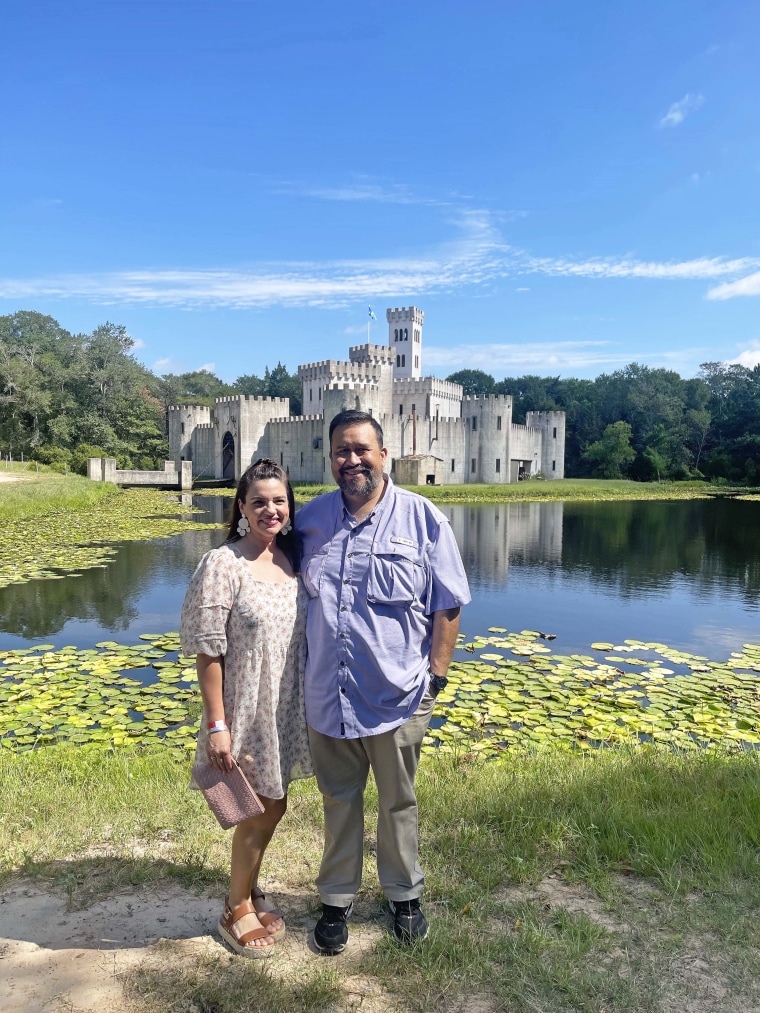
For their 30th anniversary in two years, Elizabeth is planning a vacation to Scotland. “That’s my ultimate dream destination,” she says. “And, after all we’ve been through, we’ll get to see it together.”
Read the full article here

